
 |
Eager Space | Videos by Alpha | Videos by Date | All Video Text | Support | Community | About |
|---|

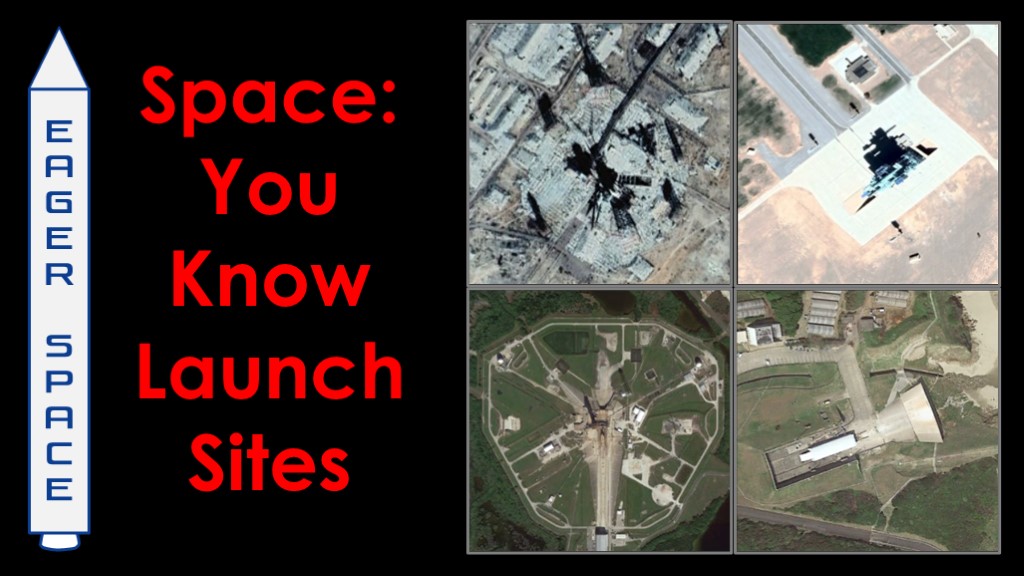
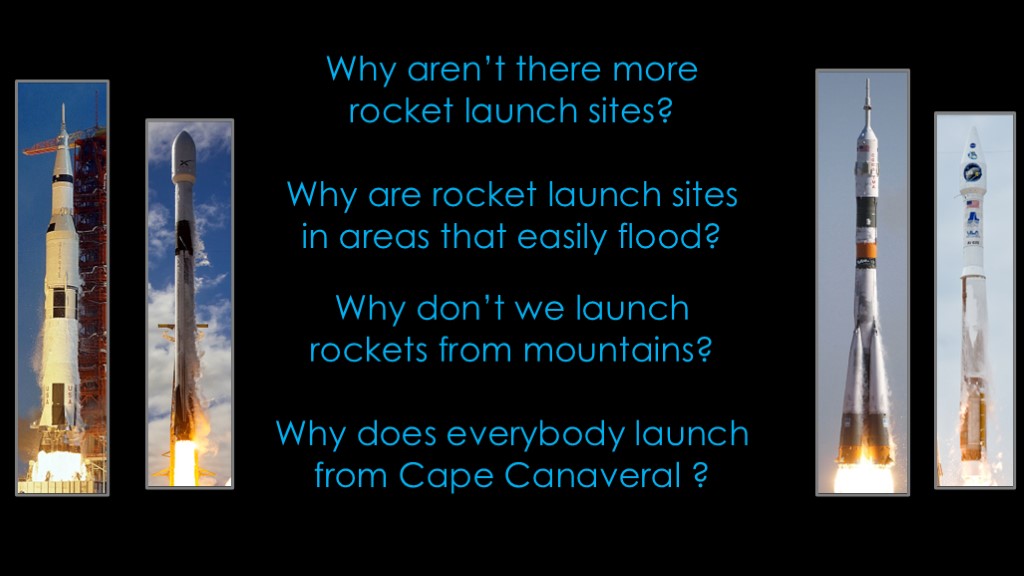
There are a number of common questions about rocket launch sites...
Why aren't there more launch sites?
Why don't we launch rockets from mountains?
Why are the launch sites in areas that flood so easily?
Why does everybody launch from Cape Canaveral?
Our subject is rocket launch sites, and specifically, what makes a good one.
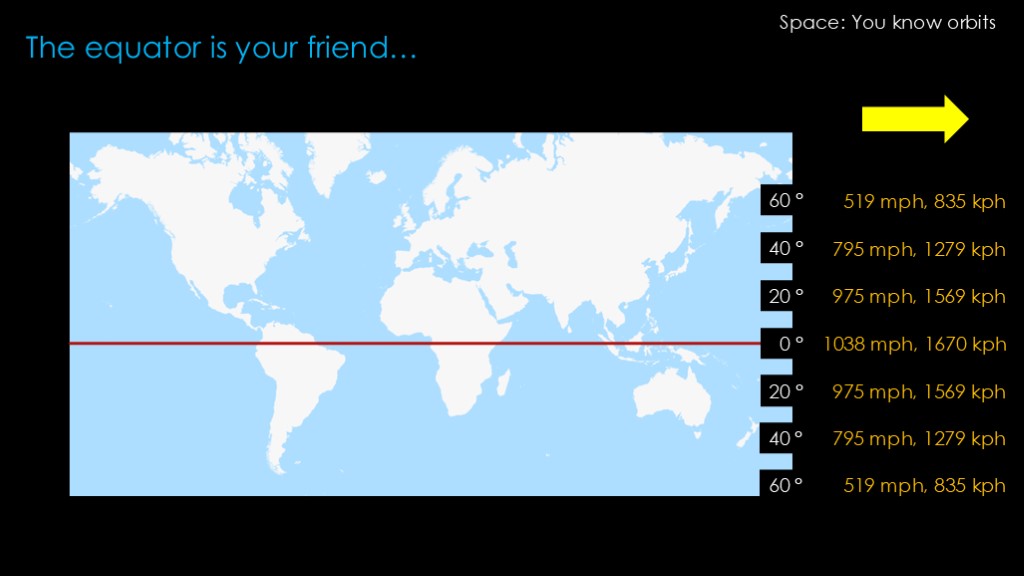
The whole point of a rocket is to put a payload into a specific orbit, so we'll need to talk a bit about how orbits affect launch site selection.
If you want a lot more information on orbits, go and watch my "Space: You know orbits" video.
The first principle is that closer to the equator is better. There are two reasons for this.
The first is that the earth is rotating towards the east. At the equator the speed is 1038 miles per hour, or 1670 kilometers per hour. If we launch to the east, that rotational velocity is added to the velocity of the rocket and that means more payload to orbit with a given rocket.
As we move away from the equator, the velocity decreases. 20 degrees of latitude north or south, and the velocity is about 6% less, and it is 25% less at 40 degrees and, and 50% less at 60 degrees.
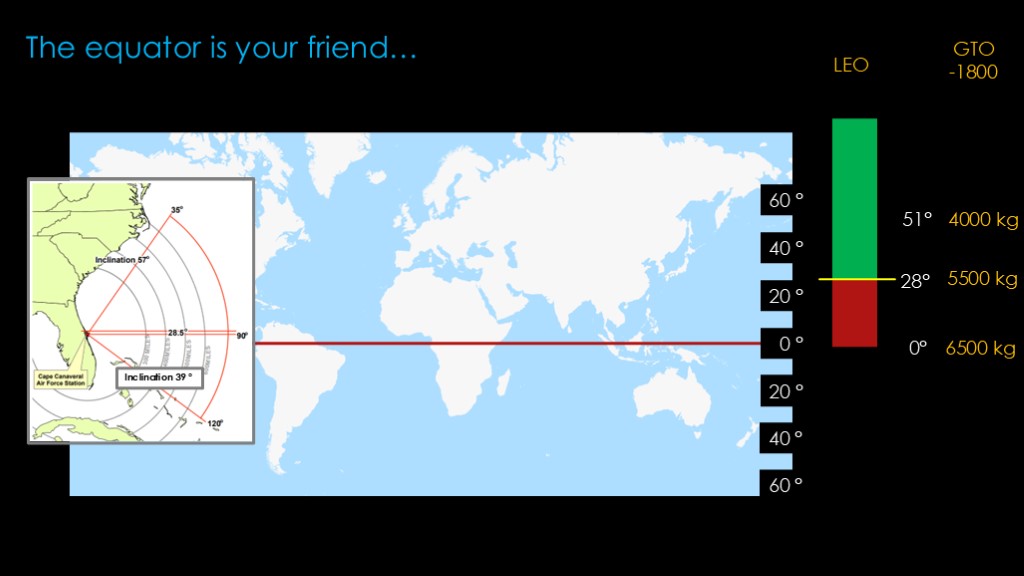
The second effect depends on the kind of orbit you are targeting.
Orbits that go directly around the equator are called equatorial. Other orbits are at an angle to the equator, and they spend some time north of the equator and some time south. The angle to the equator is known as the inclination of the orbit.
Because of the way the physics works, the inclination of the orbit you can easily reach is equal to the latitude of the launch site. Cape Canaveral is at 28 degrees north latitude, so launching directly east gives an orbit that is inclined at 28 degrees.
A higher inclination orbit can be reached from cape canaveral by aiming the rocket to the northeast, and it can also be reached by aiming the rocket to the southeast. Higher inclination orbits result in slightly reduced payloads.
For launches to Low earth orbit, it is technically possible to reduce the inclination during or after the launch, but it costs so much energy that that we generally just say it's impossible. A rocket that could lift 22,000 kilograms to a 28 degree orbit could only lift 4,000 kilograms to a 0 degree orbit.
This generally isn't an issue as low earth orbits that are low inclination aren't very useful for anything - higher inclinations are far more useful.
For orbits that are on the way to geosynchronous orbit - where zero inclination is very useful - it is possible to get there from higher latitude launch sites, but it has a energy cost and therefore a payload cost. Most of these payloads launch to an intermediate geosynchronous transfer orbit and the satellite does the rest of the work of getting into the final orbit.
If we are heading to a typical geosynchronous transfer orbit like GTO-1800, we'll say our hypothetical rocket launched from the equator will have a payload of 6500 kilograms.
Launch that same rocket from a launch site at 28 degrees, and it only lifts a payload of 5500 kilograms. It's about a 15% reduction in payload, significant but not so bad that you can't launch a geosynchronous satellite from that launch site.
Move to 51 degrees, and the payload is down to 4000 kilograms, about a 40% reduction in payload, and that's pretty bad.
Those two reasons are why launch sites near the equator are generally preferred. There are exceptions that I'll cover later.
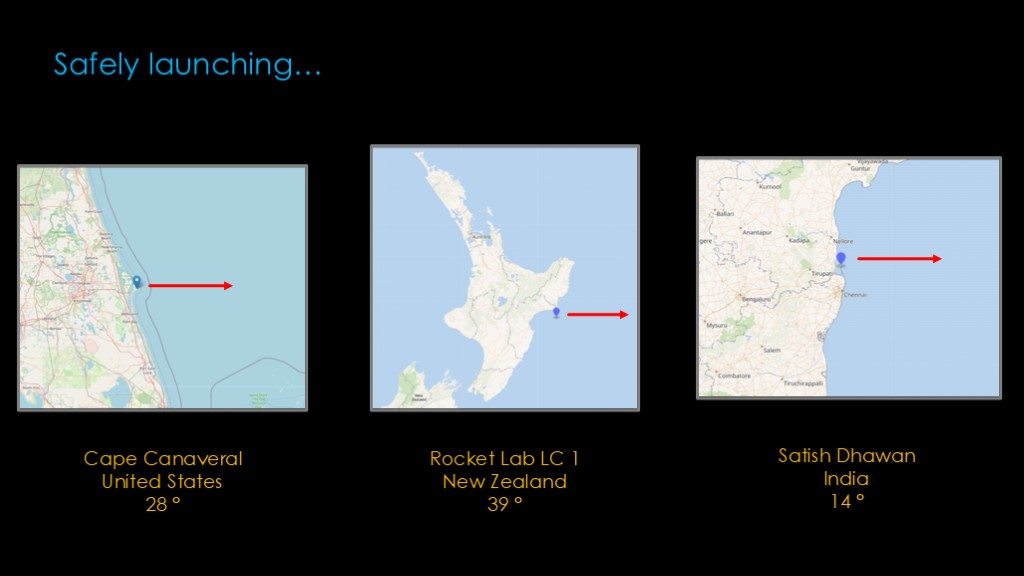
Many launch sites are on the east coast, so that the expended first stages can land in the water.
Cape Canaveral in the US, Rocket lab LC 1 in new Zealand, and Satish Dhawan in India are all on the east coast. All three areas are lucky enough to have good east coast locations.
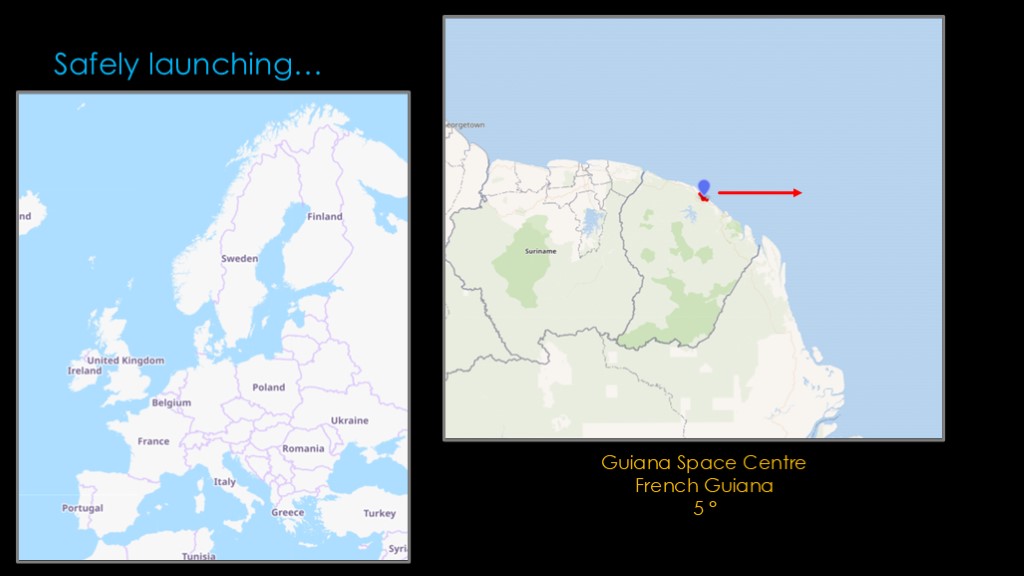
Europe, on the other hand, is less lucky - they don't have any convenient east coasts for spaceports that wouldn't drop used stages on other countries.
The European Space Agency therefore launches from Guiana space center in French Guiana on the north coast of south America. This location is also only 5 degrees from the equator, which makes it a great site for low inclination launches.
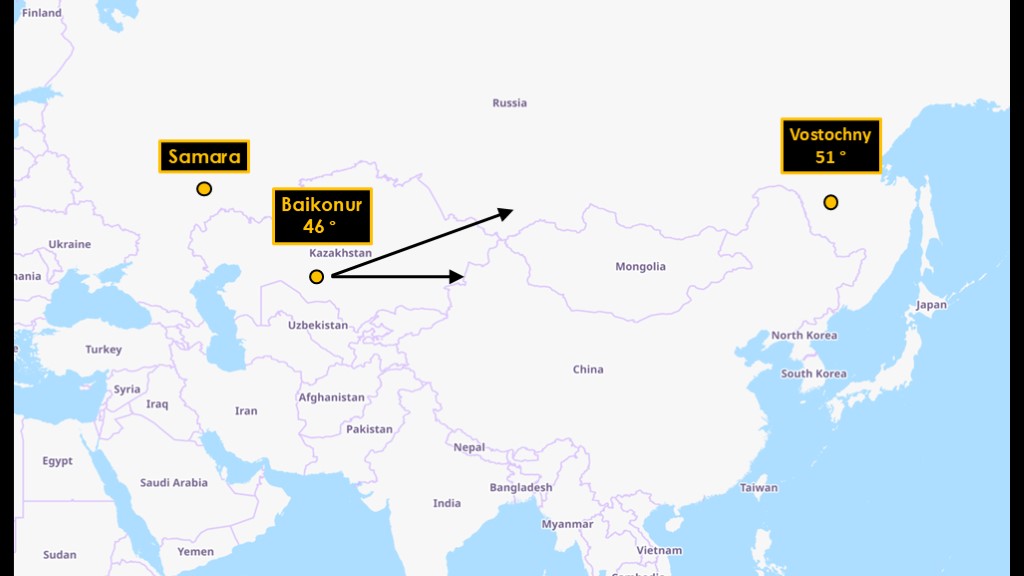
Russian does have an eastern shore and they do in fact have a spaceport near that point, va-stoich-ne Vostochny Cosmodrome. It's at 51 degrees north, so it has very limited access to lower inclination orbits. The Soyuz 2 rockets it launches are manufactured in Samara, more than 6400 kilometers away by rail. The first launch at Vostochny was in 2016 and it has only launched a few rockets.
The main Russian launch site is at Baikonur in Kazakhstan. It's at 46 degrees north, but launching directly to the east means that the spent rocket stages would drop on China or Mongolia, so launches from Baikonur aim a little bit to the north and that means their minimum orbital inclination is 51 degrees, the same as their new launch site at Vostochny.
The limited inclinations accessible from Baikonur is one of the reasons that the international space station orbit is inclined at 51 degrees - it's a little less efficient for the US to launch to that inclination but it's pretty impossible for Russian to launch to any lower inclination.
This does mean that Russia drops used rocket stages over their own territory, but given how hard it is to get to their eastern coast, it's an understandable decision.
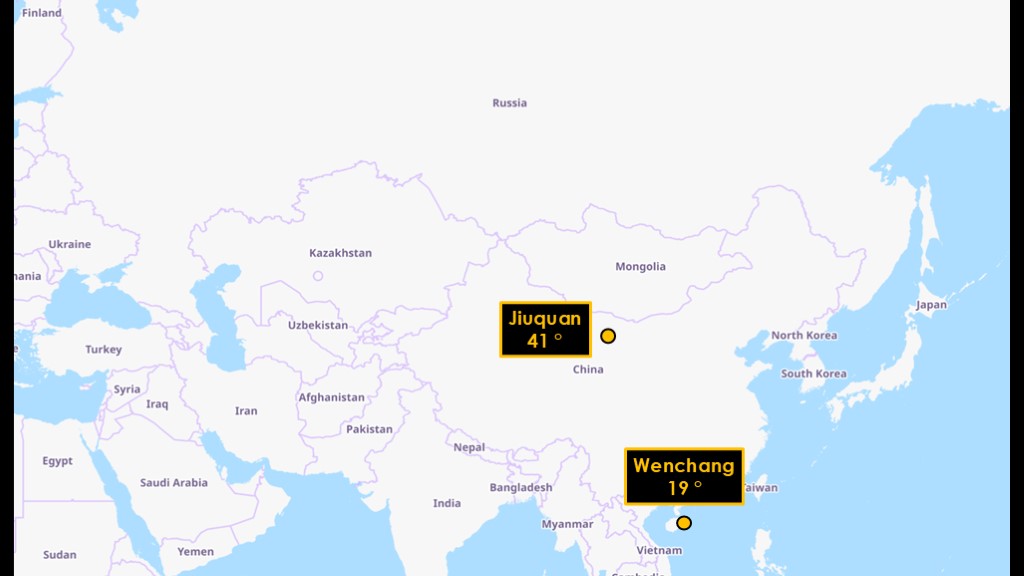
China does have an eastern coast and in fact the Wenchang launch site is nicely situated at only 19 degrees of latitude.
That is, however, one of their new sites.
Their most active launch site and that one that supports crewed launches is gee-o-quan Jiuquan at 41 degrees of latitude, and that's why their space station is at 41 degrees of inclination. The spent stages from that launch site - and from other inland sites - do fall on Chinese territory, sometimes hitting towns.
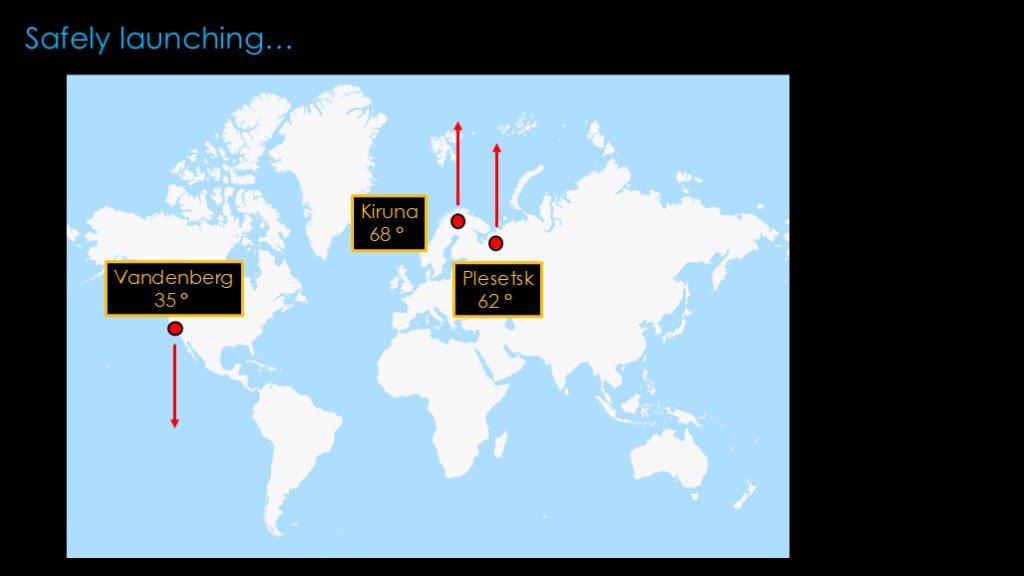
If you are launching to polar orbits, you don't need an eastern coast - you can launch either to the north or to the south - and the latitude of your launch site is largely unimportant because you don't get a boost from the earth's rotation.
The Russians launch from plea-setsk Plesetsk, all the way up at 62 degrees, and the Swedes are planning on launching from keeruna Kiruna at 68 degrees. Most of the US polar launches come from Vandenberg space force base in California, where launches are made over the water to the south.
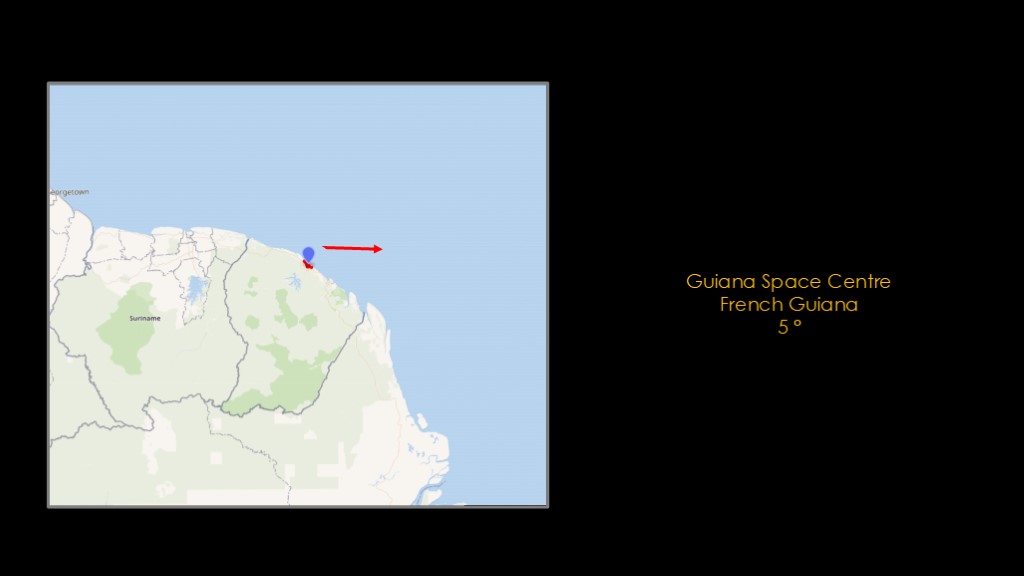
There are often some constraints on launching. Guiana space centre is nice because it is largely free of constraints, and launches can point directly east to head to low inclination orbits or north or past north to get to polar orbits.
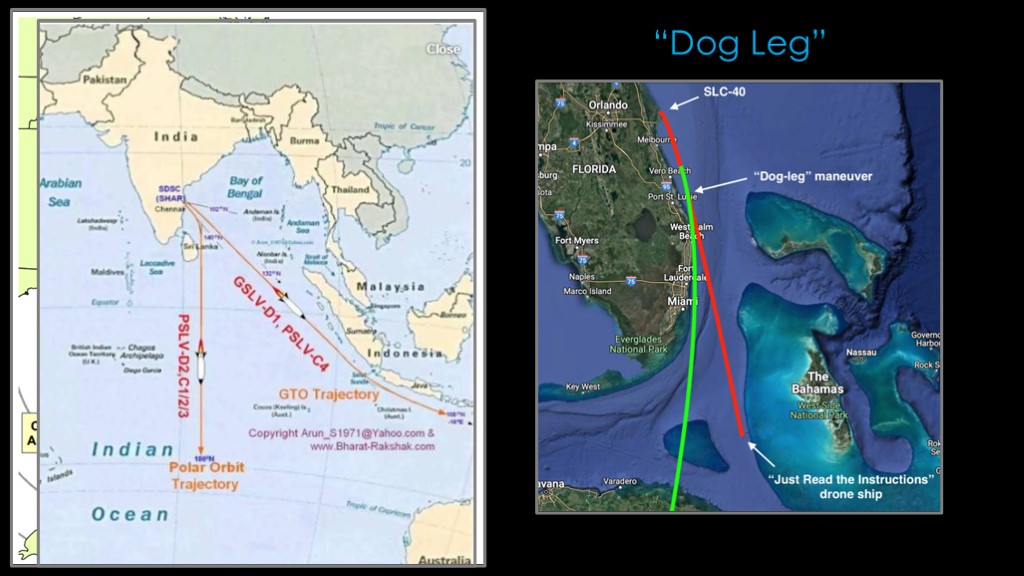
Cape Canaveral is more restricted. It can't get higher than 57 degrees because it would fly over the eastern seaboard of the US, and if it tries to aim too far south it will fly over islands with people on them.
It's possible to fly what is known as a "dog leg" trajectory - one that is deliberately curved to avoid flying over land. This is one that SpaceX has used to launch from Cape Canaveral into a polar orbit. That path keeps them offshore Florida and puts the drone ship in a reasonable position for the first stage to land.
India has similar problems with their launch site, and they will also fly a dog leg when going to a polar trajectory.
Dog leg trajectories not surprisingly are sub optimal and reduce payload slightly.

There are many other factors that make a good launch site. It's very useful if it's not close to anything.
Cape Canaveral is well separated from the mainland, with NASA's launch complex 39 to the north, cape Canaveral space force station to the east, and Kennedy space center in the middle. The closest non-space areas are Titusville to the west - more than 10 miles from the big NASA pads - and Port Canaveral on the south.
It also helps that Cape Canaveral has been launching rockets for more than 50 years, so nobody around the area is surprised by them.
This pattern is repeated at India's Satish Dhawan; there are pads near the coast, solid rocket manufacturing in the same area, and pretty much nothing nearby.
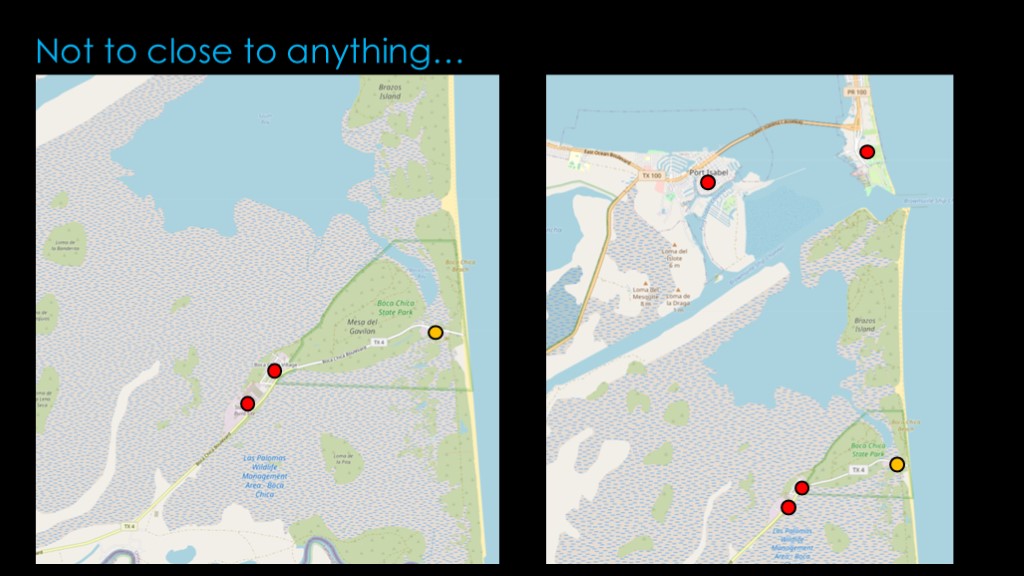
SpaceX managed to find a pretty good site at Boca Chica on the east coast of Texas just north of Mexico.
The launch pad is near the coast, and the closest built up areas are the starship factory location and what is left of a small retirement village. There is really nothing else around.
But if we zoom out a bit, we see South padre island to the north at about 5 miles of distance and port Isabel just a little bit farther.
This is an area that is not used to rocket launches and starship is a very big rocket, so currently spacex is limited to 6 launches per year from this site.
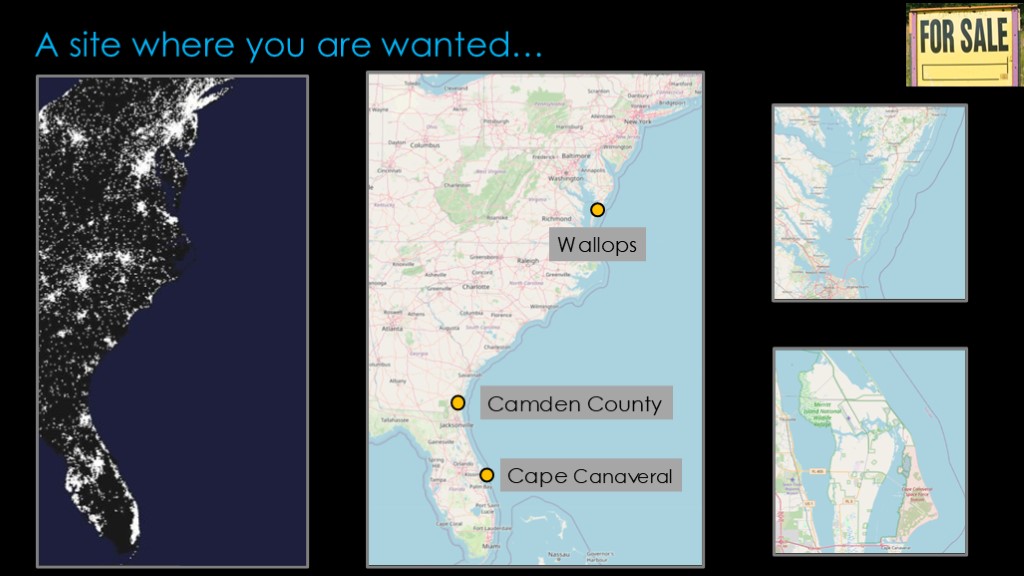
The launch site has to be a site where you are wanted.
The left picture shows the distribution of population on the east coast, and you'll note that the east coast of Florida is population dense, which means launch sites are limited. Cape Canaveral is a set of barrier islands that were low-lying and swampy, and therefore they were available when the government was looking for land to test missiles.
Far to the north in Virginia, there is Wallops Flight Facility, also a piece of land that is away from population centers.
Camden county in Georgia attempted to create a spaceport near Woodbine, Georgia over a number of years, trying to attract NASA and more recently SpaceX, but in 2022 voters rejected the project.
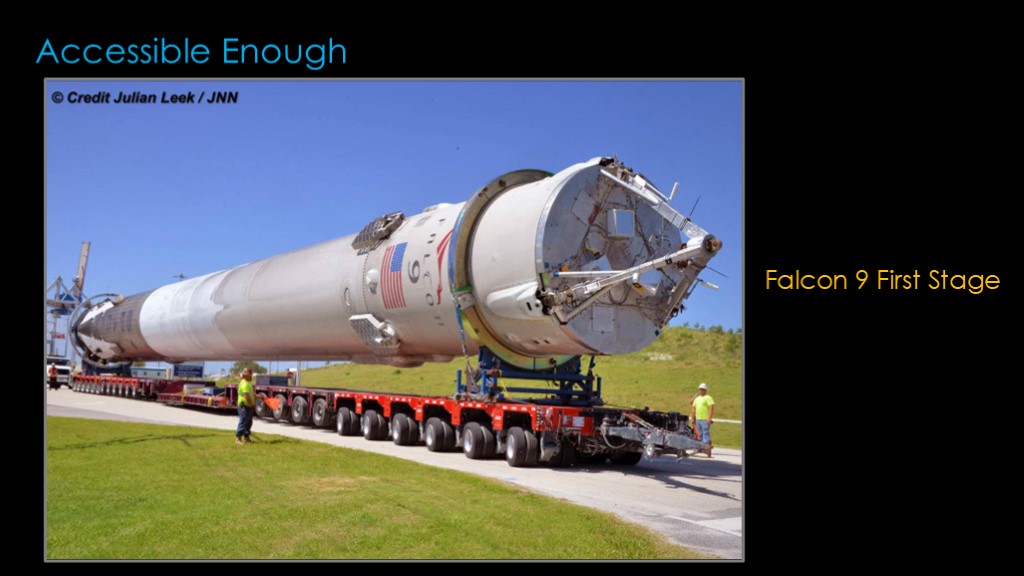
The site needs to be accessible enough to get your rockets and equipment to the site.
A Falcon 9 is pretty much the maximum size rocket you can put on a truck and ship across the country. It's about 3.7 meters, or 12 feet wide. It's thin as rockets go.
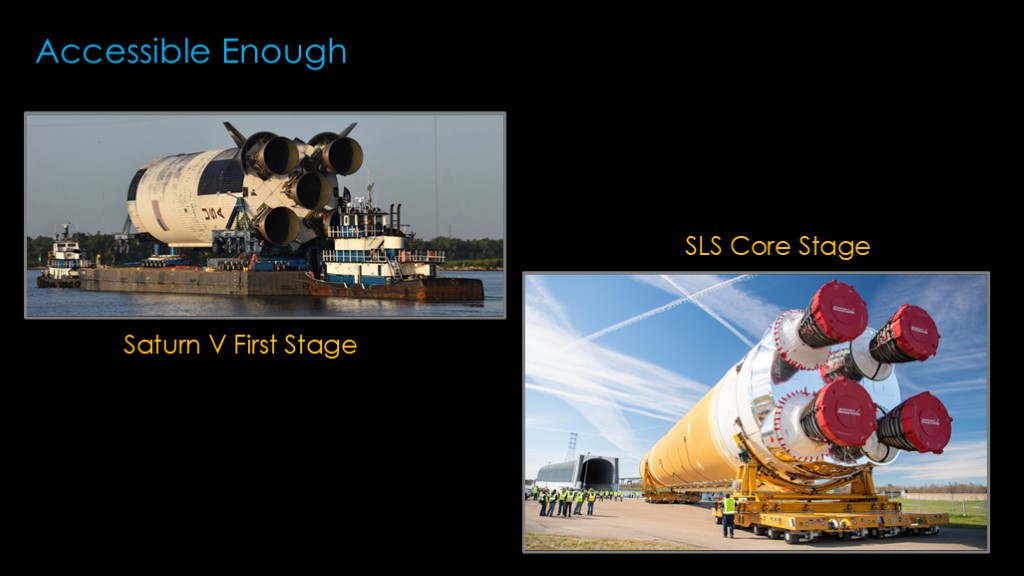
Other rockets are much bigger. The Saturn V was 10 meters, or 33 feet, and the SLS is slight smaller, at 8.4 meters or 28 feet.
Both of these rockets are shipped to the launch site on a barge, and having water access is therefore a very useful thing.
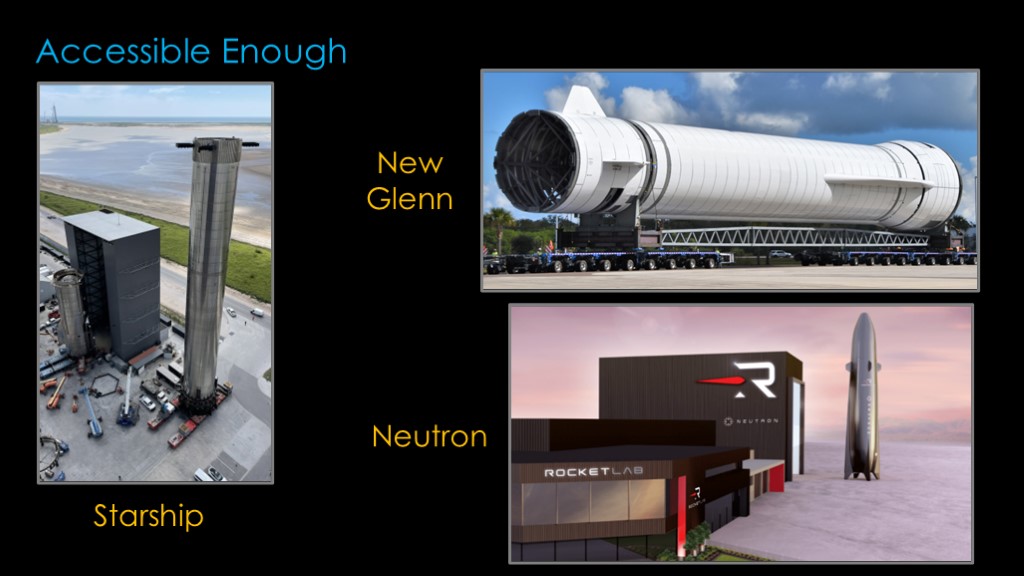
Or you can decide to build the rocket in a factory right next to the launch site, as SpaceX is doing with Starship, Blue Origin is doing with New Glenn, and Rocket Lab is doing with neutron.
You do obviously need a site for the factory and a practical way to transport the rocket to the launch site if you are going to go with this approach
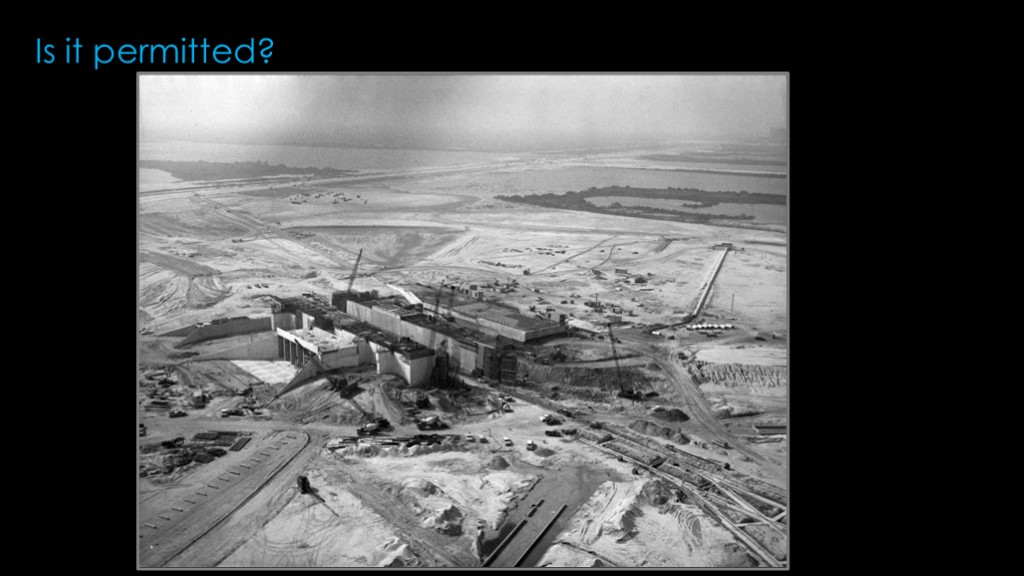
It needs to be permissible to build whatever launch infrastructure you need.
This picture shows the construction of Pad 39A at kennedy space center in 1965.
In those days, there were no issues with taking 160 acres or 65 hectares of wetland and filling it all in to create a launch site.
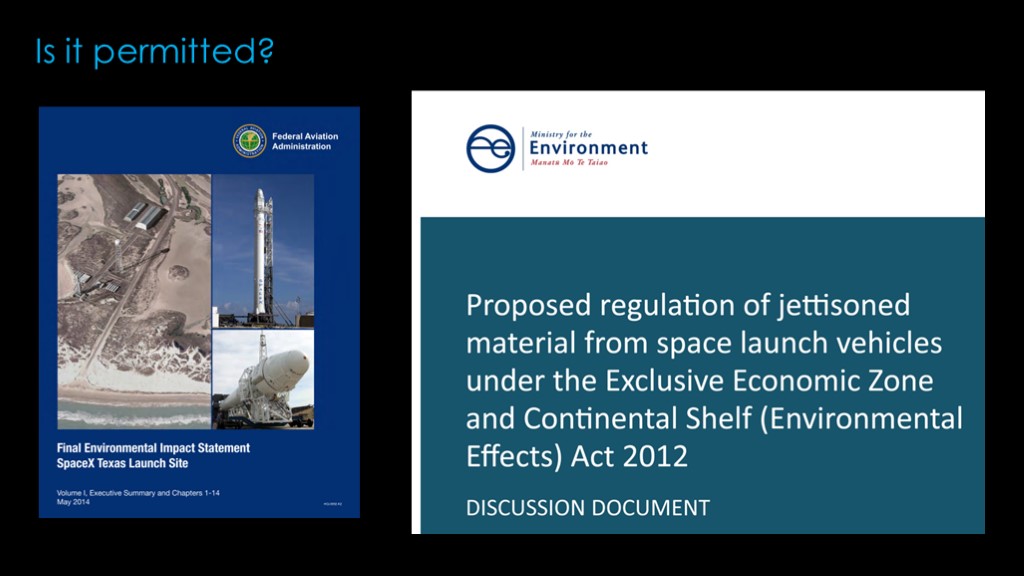
In current days, there is a huge review process to do anything in sensitive areas. SpaceX went through it with their Boca Chica launch site. Rocket Lab went through it for their launch site in New Zealand. It generally takes many years of work and a lot of money to undertake such a project, and approval is not guaranteed.
If you want more detail on what is actually involved in this sort of environmental review, I've linked to the Boca Chica review documents in the video description:
https://www.faa.gov/space/environmental/nepa_docs/spacex_texas_eis
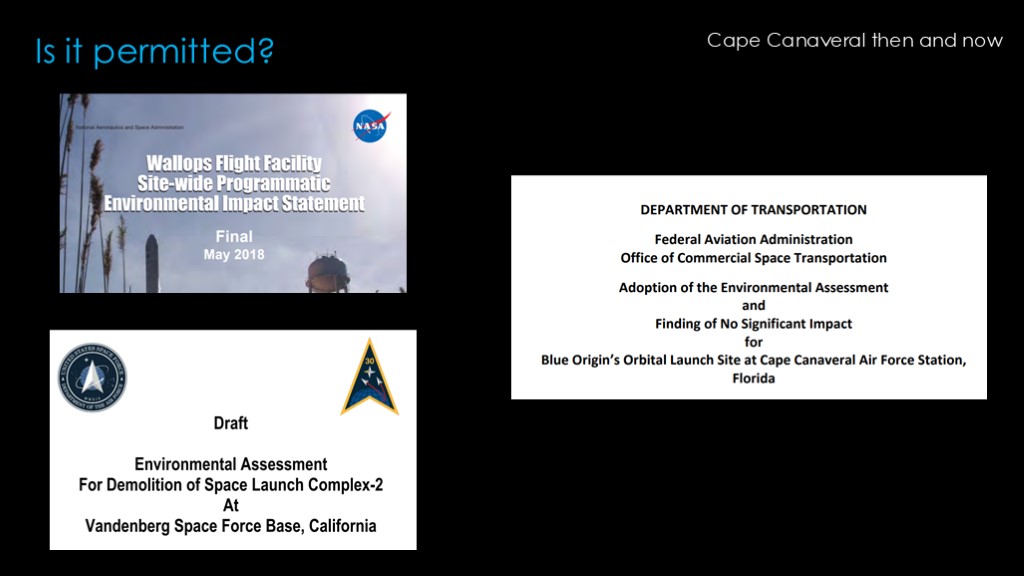
In most cases, it's far more straightforward to find a spot at an existing launch location, where the previous construction has paved the way for new use and the surrounding population is used to the impact of rocket launch.
These locations are of course desirable for many launch companies, with sites at Cape Canaveral difficult to get and sites at Vandenberg air force base in California even harder to get.
If you want to understand more about the history of cape Canaveral and what companies are currently operating there, see my video "Launches at Cape Canaveral - then and now"
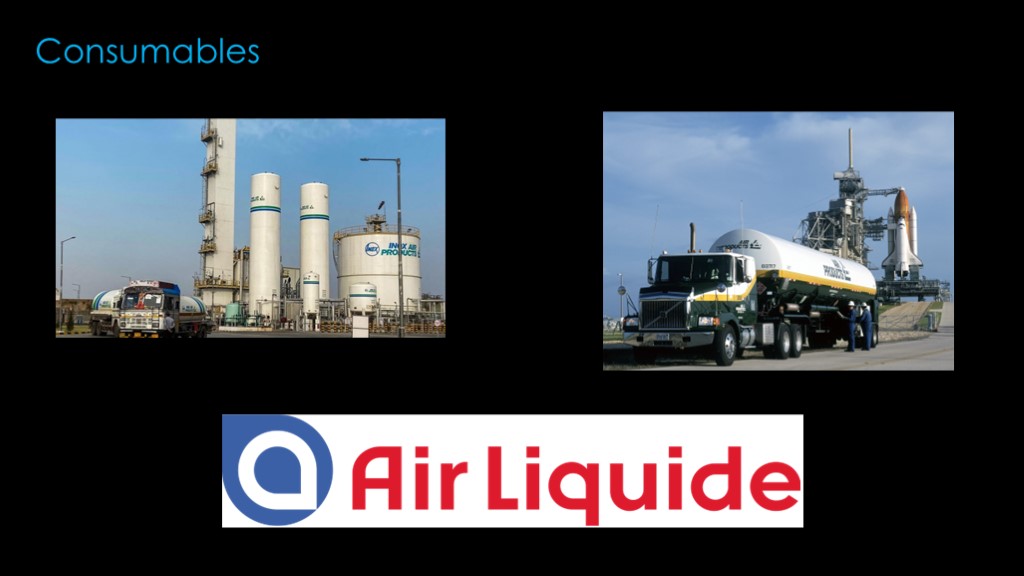
Your rocket is going to need consumables - liquid oxygen and a fuel such as liquid hydrogen, liquid methane, or the refined kerosene known as RP-1.
You need suppliers for all of these products in the quantities that you require. Being near a site that already has that infrastructure makes it cheaper - for example, Air Liquide already has a liquid oxygen production facility near Kennedy Space Center.
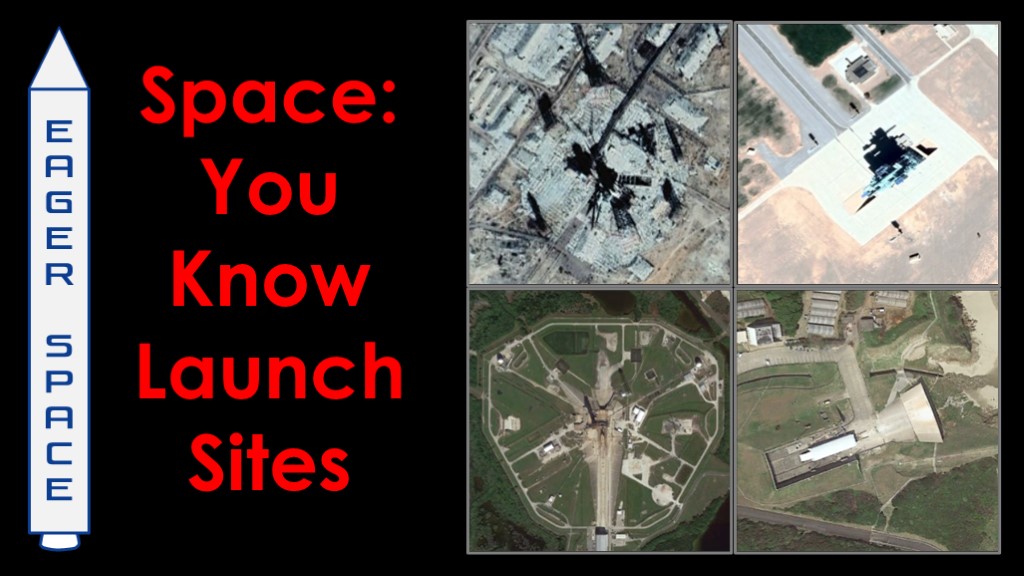
And now, you know launch sites...
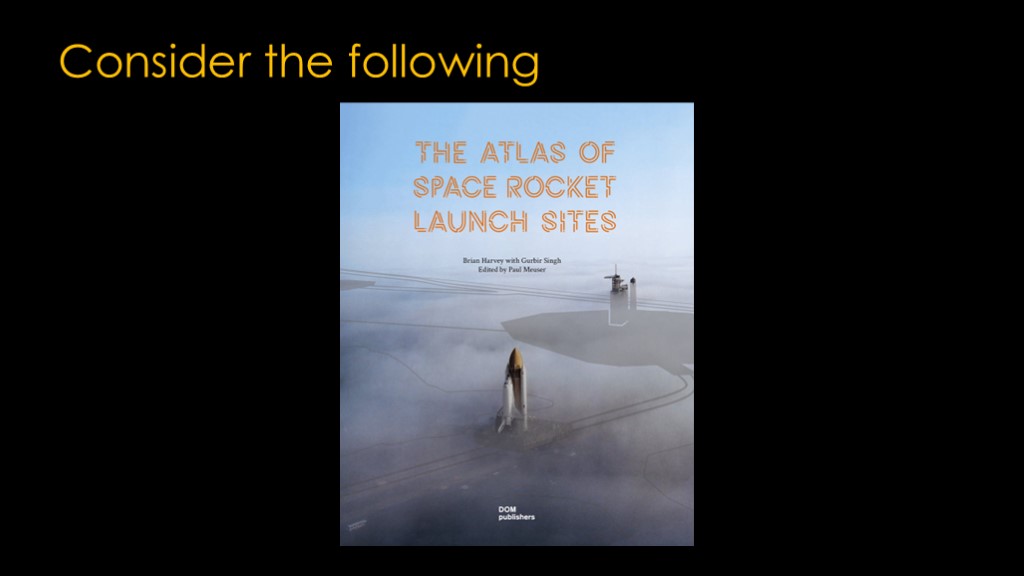
If you enjoyed this video, you might enjoy the atlas of space rocket launch sites.